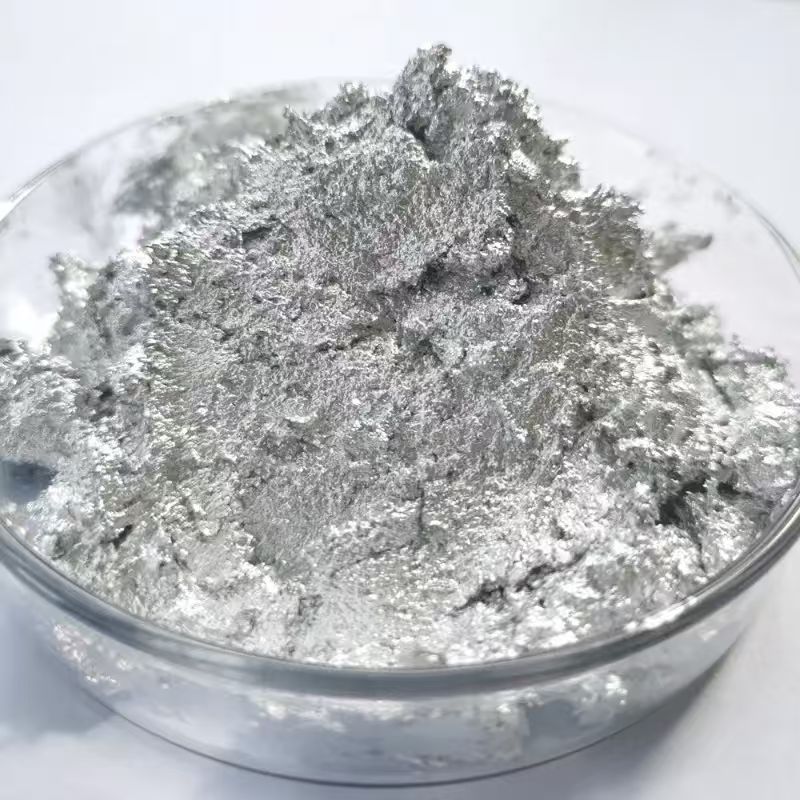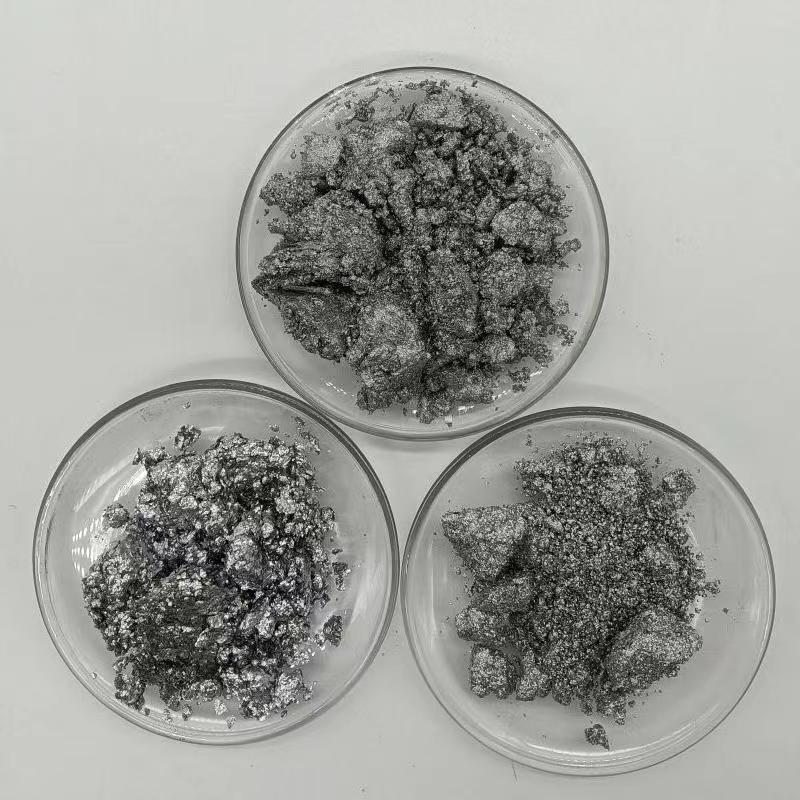coated aluminum pigment
Aluminum pigments are widely used in automotive coatings, 3C coatings, powder coatings, etc. due to their excellent properties such as bright metallic luster, angle-dependent color effect, heat insulation, and excellent covering power. Aluminum is a metallic material with good electrical conductivity and poor electrostatic properties; the main component of powder coatings is high molecular materials, which have poor electrical conductivity and good electrostatic properties. When the two are mixed for electrostatic spraying, there is a problem of inconsistent electrostatic properties, which easily causes color differences in the paint film. Moreover, aluminum is a dual-metallic metal that is prone to corrosion, so the use of sheet-shaped aluminum powder in powder coatings has the problem of corrosion and color change, especially in products with harsh conditions such as outdoor profiles, kitchen and bathroom products, etc.
Powder coatings, especially those for outdoor profiles, kitchen and bathroom products, etc., have complex and demanding usage conditions, and the acid and alkali corrosion resistance test is an important part of their quality assurance. There are many factors affecting the acid and alkali corrosion resistance of the coating. For metal powder coatings, the main influencing factors lie in the following two aspects: Firstly, the crosslinking density of the plastic powder itself and the thickness of the paint film. The higher the crosslinking density and the thicker the paint film, the better the protection performance of the aluminum sheet and the higher the corrosion resistance; Secondly, the influence of the acid and alkali corrosion resistance of the sheet-shaped aluminum powder itself. Especially in thin paint film systems, the influence of the aluminum powder itself on corrosion is greater.
In addition to the acid and alkali corrosion resistance, the color phase of the paint film is also important. Powder coatings are directly melted and solidified by plastic powders, and have no better wetting, leveling, and dispersion of pigment and filler than liquid coatings. Especially for metal powder coatings, if the aluminum sheet cannot be well dispersed and oriented, it is difficult to have excellent coating effects, especially the "angle-dependent color" effect. Therefore, the current mainstream in the market is to use the binding method to closely connect sheet-shaped aluminum powder and plastic base powder, so that the color phase is uniform and the color difference is small after spraying. Binding means in a specific binding machine, in a stirring state, heating the plastic base powder to a temperature near the T g point to start softening and sticking, then adding sheet-shaped aluminum powder, making it adhere to the surface of the plastic base powder, and then quickly cooling to achieve mutual adhesion and binding of the aluminum pigment. Binding involves heating the plastic base powder in a specific binding machine while it is in a stirring state, causing the powder to reach the T g point and begin to soften and become sticky. Then, the sheet-shaped aluminum powder is added to adhere to the surface of the plastic base powder. After rapid cooling, the effect of mutual adhesion and binding is achieved. During the binding process, if the temperature control is not proper, it is easy to cause the plastic base powder to prematurely solidify and form clumps, resulting in losses.
This paper studies the corrosion resistance of sheet-shaped aluminum powder after different surface coating modifications, and focuses on the influence of different coated and modified sheet-shaped aluminum powders on the binding effect of powder coatings.


